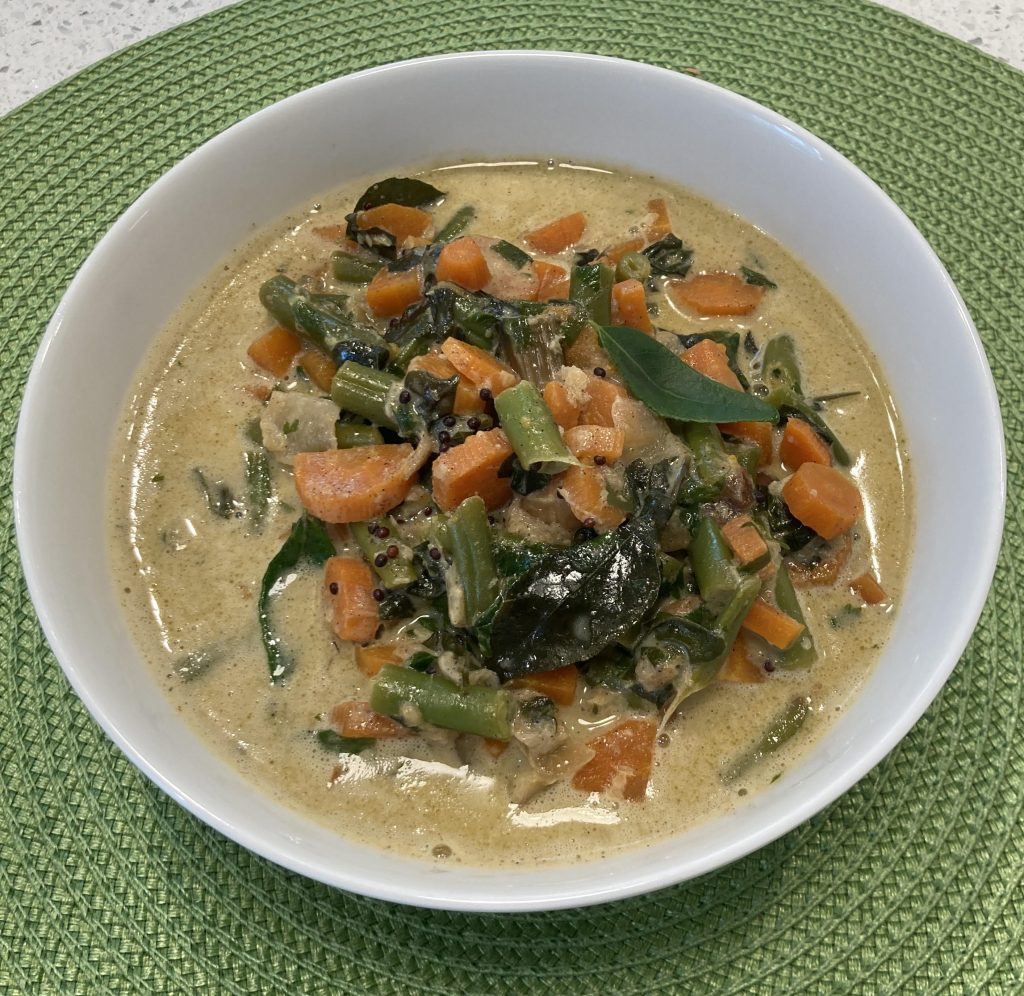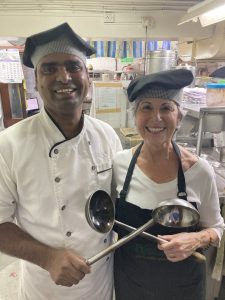Veggies in a Sweet and Savory Sauce

If you’ve ever enjoyed the subtly sweet and oh-so-mildly spiced Indian dish known as Malai Kofta, your tastebuds will experience a similar ecstasy when they meet this dish that I offer you today—Methi Malai. This sumptuous side dish, which is perfect for spring, can be served alone or over some basmati rice.
I cannot claim this recipe as my own, as I have adapted it from a traditional dish made in many Indian homes. I first tasted Methi Malai in December 2023 when my husband and I spent five weeks in India at the Ayushakti Ayurved clinic in Malad, near Mumbai. We were there for panchakarma, a medically supervised detox program, where we were privileged to work with some of India’s most renowned doctors of Ayurvedic Medicine—while eating some of the most divinely inspired cuisine. Yes, even while doing a detox, you can eat deliciously in the world of Ayurveda!
Hats Off to the Chefs
The Ayushakti Ayurved medical clinic boasts a restaurant called Swadshakti on its first floor. It features dishes primarily based on the recipes of the clinic’s co-founder, Vaidya Smita Naram. Dr. Naram is not only one of India’s most proficient pulse masters, clinicians, and educators but also an amazing cook!
I had so much fun spending some time in the kitchen with two of the restaurant’s marvelous chefs while we were in India. Manoj Kenny, who taught a small group of us how to make Methi Malai, is the warm and engaging master chef who served this dish to panchakarma clients in early December. Thank you, Manoj, for this wonderful dish and indulging me with a photo of the two of us.
Methi Leaves
Methi leaves—also known as fenugreek leaves—are the unique ingredient in this dish. Methi is a leafy green that is typically found only in Asian food markets. Like other greens more readily available in American markets, methi leaves are somewhat bitter with a distinct flavor that is unlike kale, chard, or other common greens that you’ll find in your grocery store.
Because I was not able to find organic methi leaves in our local Indian store, I tried making the dish with dried methi leaves. (Yuck! I do not recommend this, although dried organic methi is plentiful online.) Even though I soaked the dried leaves in water before cooking them, the final dish was too much like eating a bowl of crisp autumn leaves picked up off the ground!
Adaptations for Home Cooks
To make acquiring the ingredients easier for American cooks, I’ve offered a substitution in this recipe, using fresh Swiss chard or spinach instead of the methi leaves. By adding a pinch of fenugreek seeds for the methi flavor, the final dish is exquisite! (I’ve also made it without fenugreek seeds, and it was still quite delicious.)
I’ve also simplified the recipe for home cooks. For instance, the master chef steamed the vegetables separately and then added them to a giant wok in which spices and onion were cooking. You can certainly do that, but it may be easier to cook the dish in one pot. Swadshakti chefs make their own masalas, their own spice mixtures, and they use a sweet masala with several ingredients for this dish. I picked up some of the flavors without calling for roasting and grinding spices for a masala.
NOTE: I’m not giving up on cooking with fresh organic methi! Once cooler weather arrives in the early fall, I’ll plant some fenugreek seeds hoping they will flourish. In the meantime, I hope you will enjoy this delightful side dish of Methi Malai.






Malai kofta is my favorite Indian dish so I will make this one for sure. Copied it by hand since my printer is out of black ink.
Me too, Karin! I love malai kofta. This dish is not meant to mimic it, but the sauce has some of the same yummy flavors!